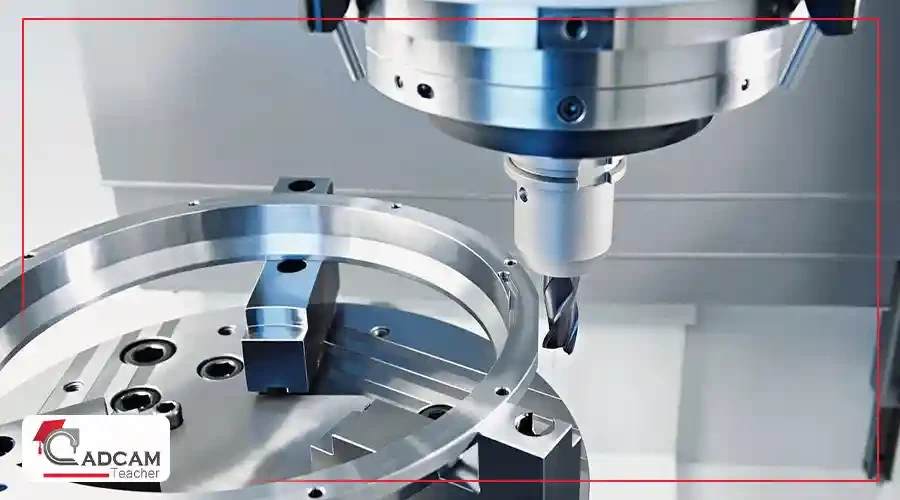-
 Call Now ! +971503930741
Call Now ! +971503930741 -
 Contact Email info@cadcamteacher.com
Contact Email info@cadcamteacher.com

CNC programming is the process of creating instructions that control CNC machines' movements and operations. These instructions are crucial as they determine the final outcome of the machining process. Let's explore the various types of CNC programming and their significance in manufacturing.
CADCAM teacher offers various types of CNC programming courses, which include:
CNC Mill Programming - Siemens.
CNC Turn Programming - Siemens.
ShopMill Programming - Siemens.
ShopTurn Programming - Siemens.
CNC Mill Programming - Fanuc.
CNC Turn Programming - Fanuc.
G-code programming is the oldest and most basic type of CNC programming. It uses a series of alphanumeric codes to control the movements and functions of CNC machines. G-code is straightforward and widely used, making it a foundational skill for anyone working in CNC machining.
Access a free comprehensive guide to learn CAD CAM and master design and manufacturing skills.
CAD/CAM programming takes CNC programming to the next level by integrating computer-aided design (CAD) and computer-aided manufacturing (CAM) software. CAD software is used to design parts or components, while CAM software generates toolpaths and G-code instructions based on these designs. This approach allows for more complex and precise machining operations.
Each type of CNC programming has its advantages and disadvantages.
G-code programming is simple and widely supported but may be limited in its capabilities.
CAD/CAM programming offers greater precision and flexibility but requires more advanced software and expertise.
Conversational programming is user-friendly but may not be suitable for complex machining operations.
High-level programming languages offer flexibility but require advanced skills.
Macro programming improves efficiency but may require additional setup.
When choosing a CNC programming type, manufacturers should consider factors such as the complexity of the parts, the required precision, and the available resources. For simple parts and quick setup, conversational programming may be sufficient. For complex designs and precise machining, CAD/CAM programming is recommended. High-level programming languages and macro programming are best suited for specialized applications and experienced users.
Book now
ShopMill Programming - Siemens
CNC programming is used in a wide range of industries and applications, including aerospace, automotive, electronics, and medical device manufacturing. It's essential for creating precision parts and components with tight tolerances and intricate designs.
read more about cnc machine courses near me
Looking to advance your career in CNC machining or take your first steps in this exciting field? Earning a CNC certification from CADCAM Teacher offers a multitude of advantages, including:
Industry-Leading Training: As a RenAn Authorized Academic Partner, CADCAM Teacher provides the most up-to-date curriculum and training methods, ensuring you gain the skills and knowledge employers seek.
Experienced Instructors: A team of highly qualified and passionate instructors, specialists in both CNC programming and CAD/CAM technology, guides you through the learning process, maximizing your understanding and success.
Flexible Learning Options: Choose from online courses or in-person training to fit your learning style and schedule. We also offer bilingual learning options in Arabic and English.
Career Advancement: A recognized CNC certification from CADCAM Teacher strengthens your resume, making you a standout candidate and opening doors to new career opportunities.
International Recognition: Earn certifications that are valued worldwide, increasing your marketability and potential for international work.
Supporting the Arab Manufacturing Industry: By obtaining your certification from CADCAM Teacher, you're not just advancing your career but also contributing to the growth and modernization of manufacturing across the Middle East.
CNC programming is a crucial aspect of modern manufacturing, enabling CNC machines to produce precise parts and components efficiently. By understanding the different types of CNC programming, manufacturers can choose the best approach for their specific needs and optimize their machining operations for success. Enroll today and take the next step in your manufacturing career with CAD CAM Teacher's online courses.
1. What is CNC programming? CNC programming is the process of creating instructions that control CNC machines' movements and operations.
2. What are the main types of CNC programming? The main types of CNC programming include G-code programming, CAD/CAM programming, conversational programming, high-level programming languages, and macro programming.
read also
CNC Machine Operator Training Near Me